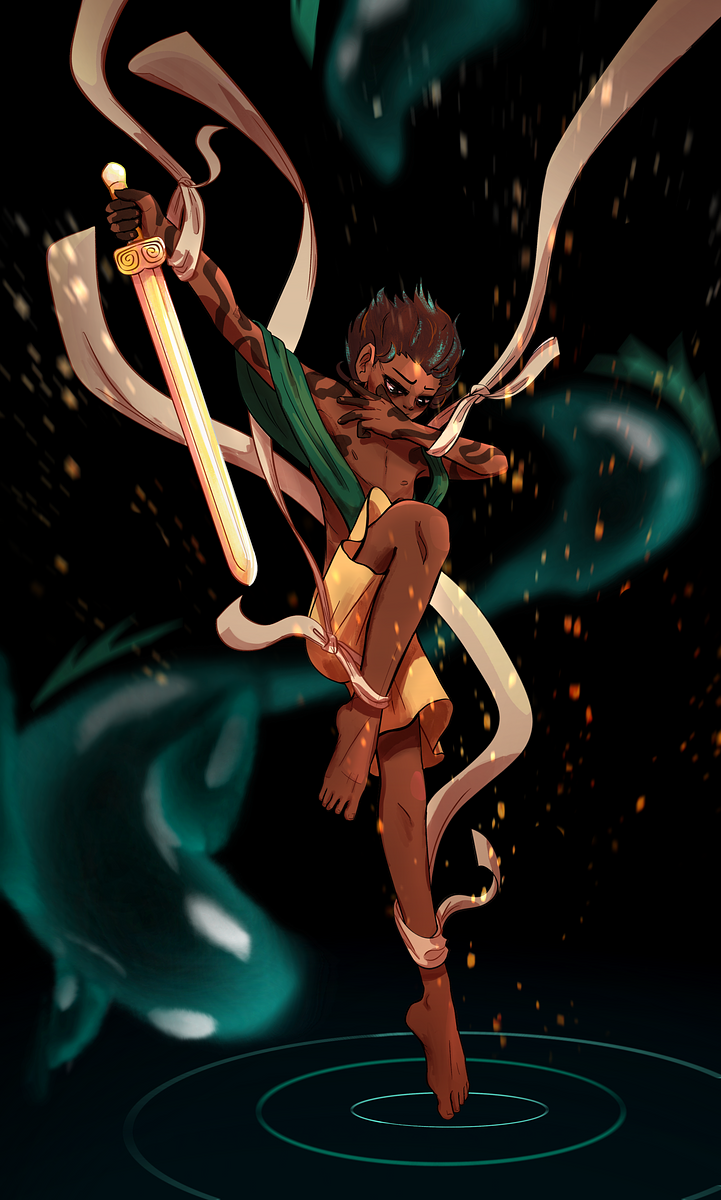The first time I watched Wes Anderson’s “Asteroid City,” I didn’t get it. This does not seem to be an uncommon experience with the film — its reviews are shockingly divisive, with many of the negative ones describing it as absurd and confusing. But I could feel how much heart was put into the film, which told me there was something to get, something hiding just under the alternately color-pop and monochrome surface. So I watched it again, and I talked to people about it, and I read what others had to say online. And I began to slowly tease apart the layers of the story, see the themes that wove together and understood what the story was trying to say a little better with each subsequent watch.
“House of Leaves” by Mark Z. Danielewski, on the other hand, was an entirely different experience for me. Despite its confusing layers and the constant, lingering uncertainty of what’s real and what isn’t, I found myself voraciously reading it as quickly as possible while still immersing myself in the tale it spun. It captivated me from the first page, and with each new mystery and each unanswered question, my desire to read on only grew.
It would not be an exaggeration to say that “Asteroid City” is one of my favorite films ever, and “House of Leaves” is one of my favorite books ever. But it wasn’t until much later that I realized just how structurally similar both stories are. For those unaware, both “Asteroid City” and “House of Leaves” could be described as being stories-within-stories-within-stories: Both are fiction, but both present themselves as if they are reporting on historical fact, but even that which they are truthfully reporting on is veiled by another layer of fiction that does not exist, both within the world of the stories themselves, and in our real world. If that sounds confusing, it’s because it is; they’re both incredibly dense and complex, and yet they’re both so captivating. So, in sitting down to write this blog post, I began to ask myself: Why would both of these stories choose to use this unique and quite frankly difficult story structure? What benefits does this narrative-within-narratives structure offer, and why is it so effective?
Before I get into my thoughts on the answers to these questions, allow me to give a brief, relatively spoiler-free explanation of both the film and the book for any readers who are unfamiliar.
“Asteroid City” was a film released in 2023 that was written and directed by Wes Anderson. It opens in black-and-white, presenting itself as a documentary that explores the way that stage plays are produced. The announcer states that the play the documentary is about, “Asteroid City,” “does not exist. It is an imaginary drama created expressly for this broadcast.” The film repeatedly goes back and forth between this monochrome, documentary format and the fully, vividly in-color events of the actual play itself, taking the audience through the play like a normal film while also providing meta context for what was happening during the making-of — all of which is fictional even within the context of the documentary, remember, as the play and its production drama are all simply to explain how producing plays works.
“House of Leaves” was written by Mark Z. Danielewski in 2000, and is rather infamous for how effectively it uses its novel format. The story opens with an introduction from our supposed-protagonist Johnny Truant, explaining how he first came across this novel (yes, already Johnny is written as though he is a real person in our real world) and the circumstances around it. He explains that he found the unfinished work by a man named Zampanò, who was writing about the documentary “The Navidson Record,” including numerous citations and quotes from all sorts of different sources about the documentary. However, as Johnny quickly discovers, “The Navidson Record” does not actually exist. So, we have our fictional narrator (presented as a real person) commenting on and leaving footnotes throughout someone else’s unfinished manuscript about a documentary that does not exist — not to mention the occasional appearances of the “editors” throughout the novel, who supposedly got their hands on the book after Johnny published it the first time, but who are also fictional.
Both “Asteroid City” and “House of Leaves” present themselves as factual accounts — the film as a documentary, and the novel as a recovery of lost media — of content that is explicitly fictional even within their universe. In both cases, these multiple layers of media bleed through to one another, and often leave the reader reeling as they try to parse what is supposed to be real and what is not. So to return to our primary question: What is it about this story form that’s so captivating?
At its core, this story structure is art about art. Both of these pieces of media are such a clear love letter to art itself, and both creatively play with their respective mediums in a way that wouldn’t be possible were they to be any other form of art. “Asteroid City” being a film about a documentary about a fake play means that it can experiment with each of those different visual forms in unique ways — by shooting the “play” scenes more like an actual movie and the “documentary” scenes more like a play (including sets on a stage and flat, static cameras), the film intentionally disrupts an audience’s expectations. The choices made in the filmmaking process cause us to feel like the play is more real than the documentary, which is furthered by bizarre lines like at the end of the film, when the actor for one of the characters in the play says to another, “It’s you, the wife who played my actress.” None of this would be possible — or at least, nearly as effective — if “Asteroid City” had been anything other than a film. Similarly, “House of Leaves” uses its medium as a book to its fullest extent. Footnotes are scattered all throughout, allowing for Johnny to weave himself into the narrative. With citations and appendices and editors’ notes galore, it can be easy to forget that you’re not actually reading a real manuscript. But even beyond that, Danielewski breaks down the novel form to its extreme, creating sections where just three words are spaced throughout an entire page, or other pages where the book must be turned and flipped through back and forth just to follow one train of thought among the dozens squeezed onto just a few pages. Despite being a book about a book about a documentary that doesn’t exist, I cannot imagine a film adaptation that could capture even a fraction of the magic that is reading “House of Leaves.”
This form also allows for the development of incredibly complex themes. With so many layers of narrative within each of these stories, there is opportunity for each level to explore its own unique themes, but even more poignantly, those themes often echo back and forth through the levels of narrative in a way a standard story cannot do, strengthening and emphasizing and complicating the message endlessly. “Asteroid City” explores the themes of grief and loss in both the documentary and the play: Without spoiling too much, one of the individuals involved in the production of the play dies, and that loss can be felt through the other people involved in the play during the documentary scenes. Similarly, the story of the play itself is about a father and his kids who have just recently lost their mother. This theme is far more noticeable in the play sections than the documentary sections, but when the death is revealed towards the end, it completely recontextualizes everything — you realize that not only have the characters within the play been going through loss, but the actors playing them are, too. When the barriers between documentary and play begin to break down, this common theme more clearly leaks through into both, and it becomes clear that both these narrative levels are really trying to say the same thing. “House of Leaves” isn’t quite as straightforward, but is still rife with themes and imagery; family is important in the documentary and to Johnny, which becomes especially clear when one reads through the appendices at the back of the novel. The image of the minotaur in the labyrinth crops up throughout Zampanò’s writing, with the themes of monstrosity and confinement eerily applicable to Johnny’s experiences as well. Obsession, unreality, a constant attempt to escape from the past — all of these themes could be effective just on their own, but the novel really shines when it weaves them all together and allows them to echo across the various narrative levels back to one another, constantly building, constantly transforming.
But ultimately, I think one of the most important parts of this kind of narrative form is that it is deliberately opaque. If you have been confused reading any of my descriptions of these stories, that’s because they are confusing. “Asteroid City” breaks the fourth wall more and more often as the film goes on, culminating in moments like the infamously surreal “You can’t wake up if you don’t fall asleep” scene and the previously mentioned line of dialogue: “the wife who plays my actress.” “House of Leaves” buries so much information under mountains of footnotes and easy to miss supplemental material, and often feels as though it is purposefully making itself hard to read (see again the note about having to physically turn the book around and backtrack in order to follow one single thought). But none of these things are done to be quirky or strange for the sake of it; I believe these choices challenge us as the audience to consider how accessible art should or has to be. Maybe art shouldn’t be easily digestible by everyone all the time. Maybe art should be difficult to understand, and maybe it should make us question whether our individual experience is missing something. If I hadn’t experienced that innate sense after watching “Asteroid City” for the first time that I was missing something, then I wouldn’t have sought out other people’s thoughts on the film. In this way, the inaccessibility of understanding in art allowed me an opportunity to connect with other people, to expand my understanding and consider other viewpoints. If “House of Leaves” spelled everything out for me, I wouldn’t have continued thinking about it for days — months! — after putting it down. Art should make us uncomfortable. Art should challenge us. And these two pieces of art achieve that to an incredible degree, all thanks to the way that they were told.
Both “Asteroid City” and “House of Leaves” are not for everyone. Their narrative forms make them intentionally hard to understand, but for the determined viewer or reader, they will both reward you with a wonderfully strange and thought-provoking and unique experience. I would love to see more stories take advantage of this surreal, stories-within-stories format. It allows for a beautiful commentary on art itself, a clear passion for the medium that one is using. It allows for a complex construction of themes that straight-forward storytelling simply cannot achieve in the same way, as well as an opportunity for the consumer to make their own connections; and it reminds us that art doesn’t have to make sense to everyone, and in fact, it maybe shouldn’t.
If anyone reading may have struggled to get into either of these things, or is now interested in giving them a shot, I could not recommend them more. If anyone knows of other stories that use this kind of format, or if anyone has additional takes on it that I didn’t discuss here, I would love to hear about them! That’s the point, after all — the more that we talk about art, especially difficult art, then the more we can connect with and understand one another.




